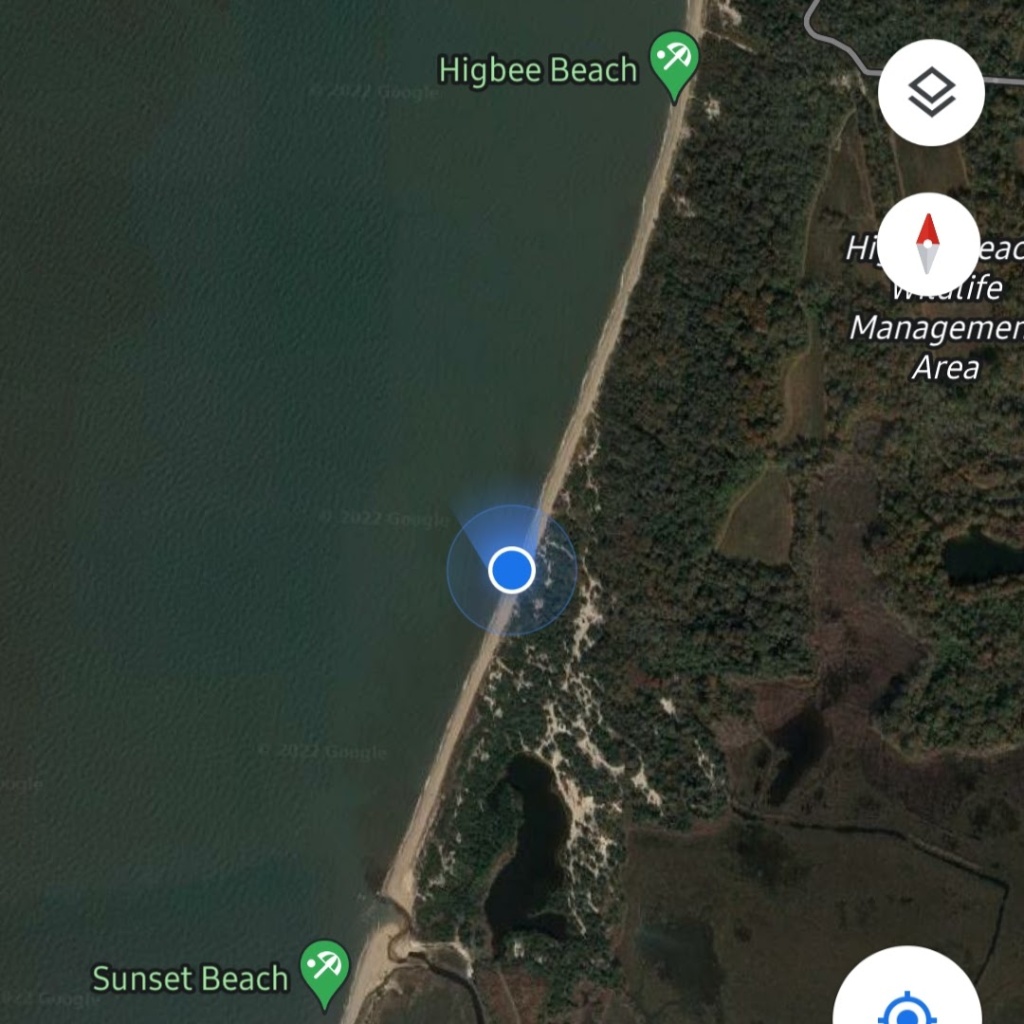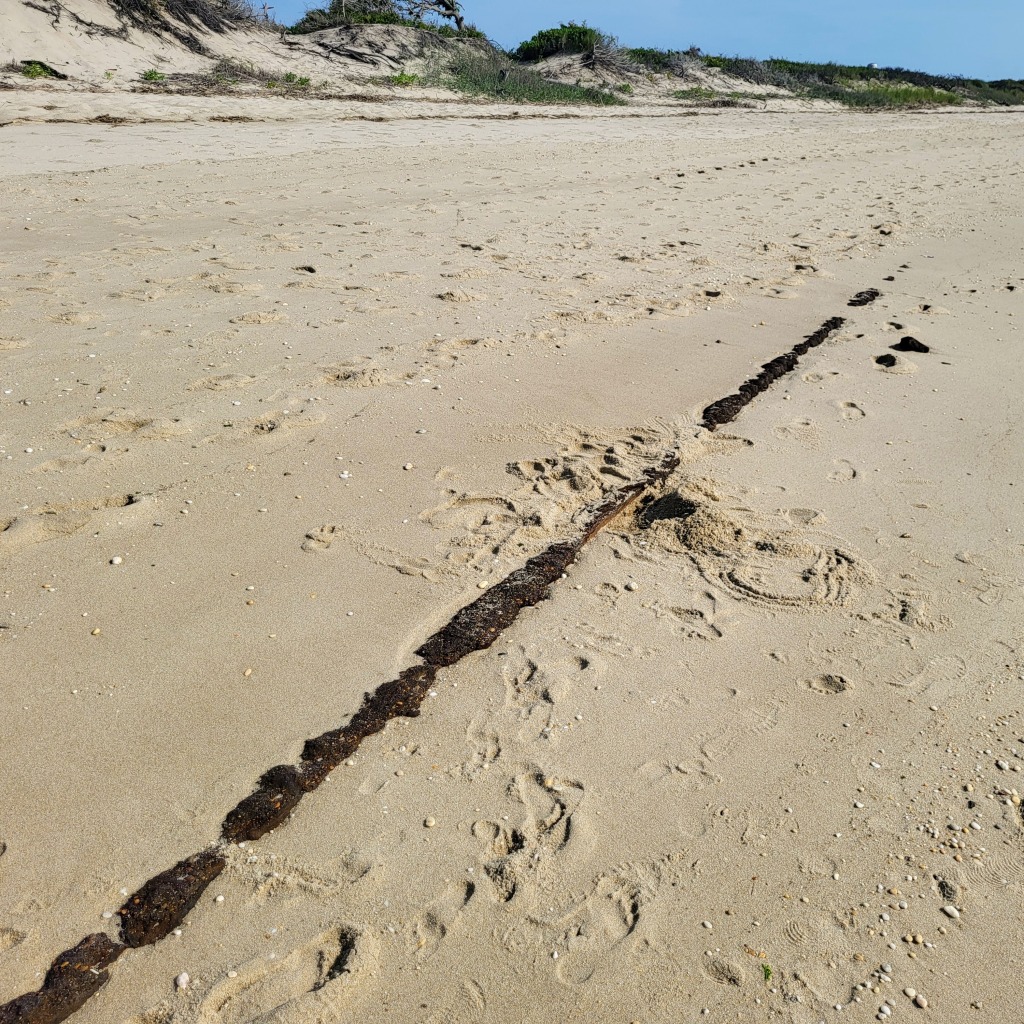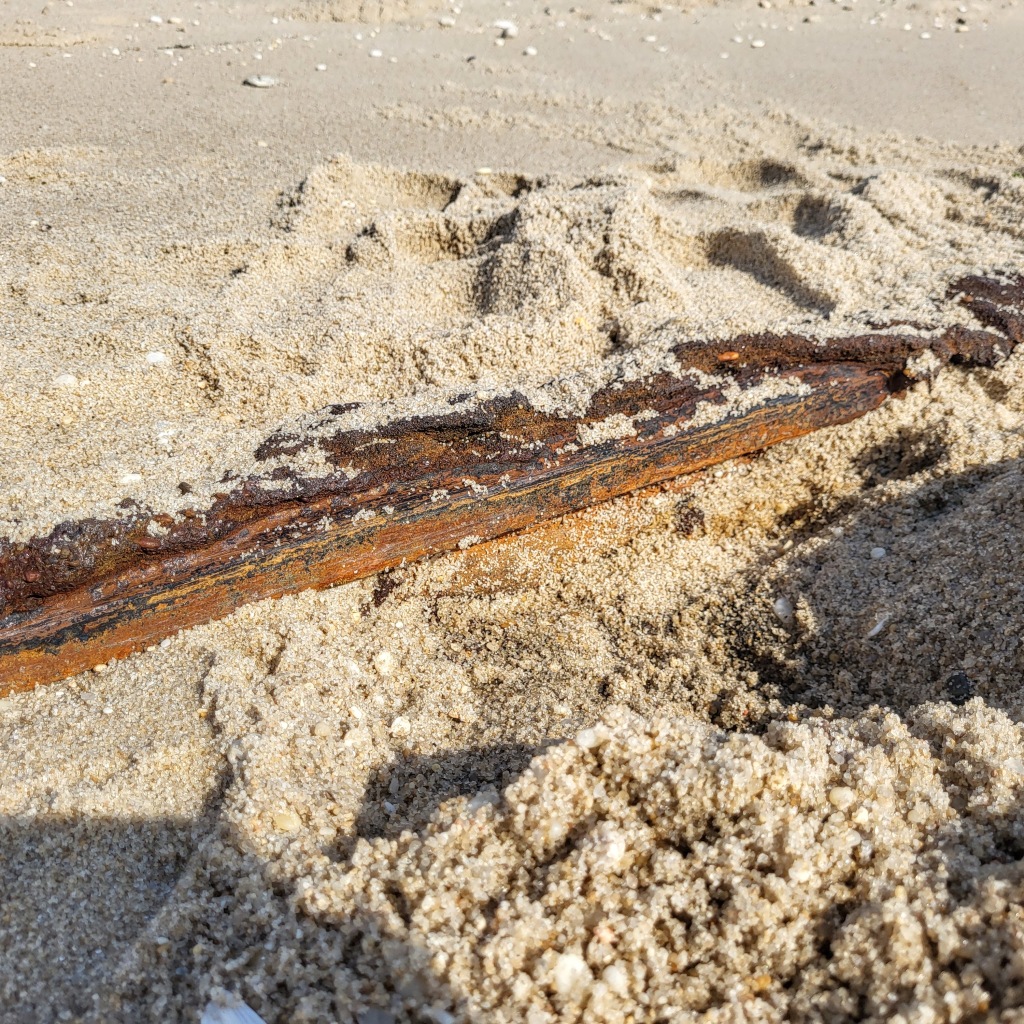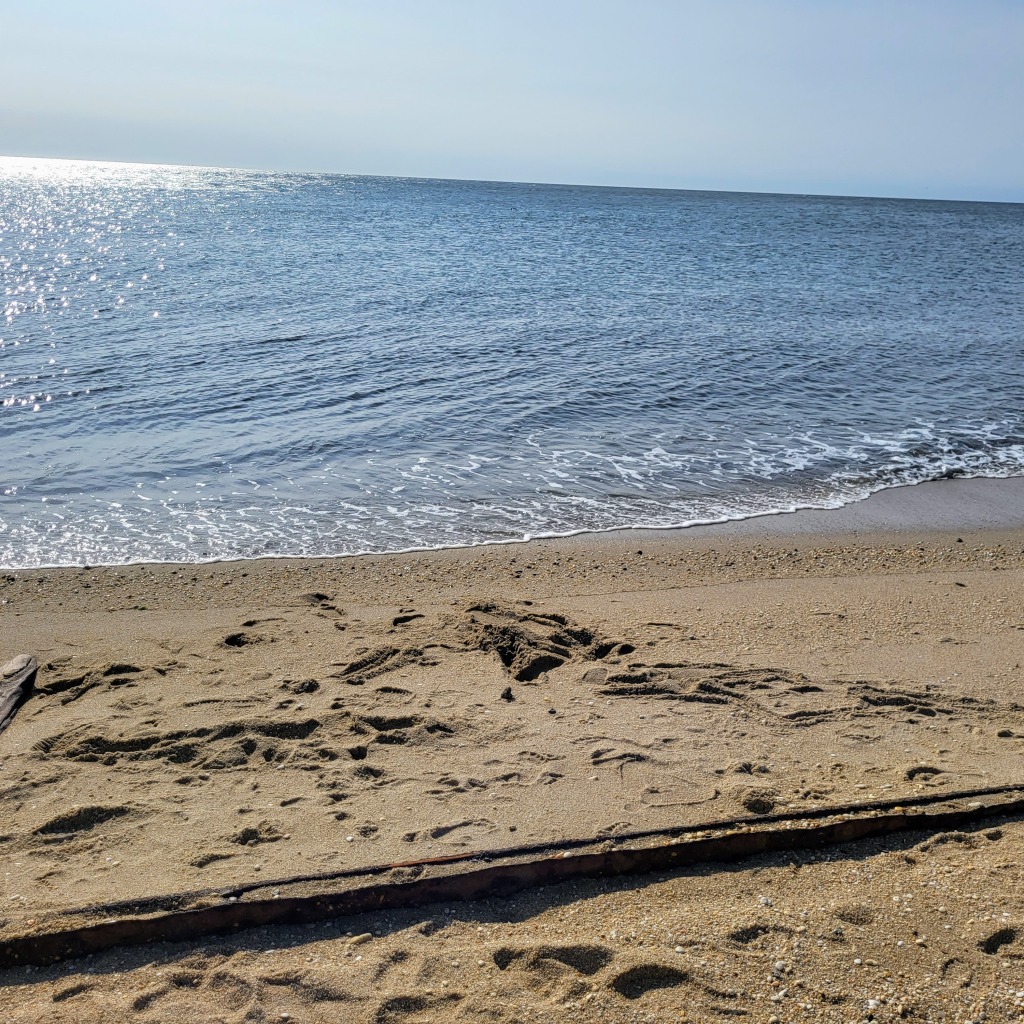It’s hard to imagine now, but at the turn of the century a rail line carted sand through Cape May, New Jersey. Beginning in 1905, the Cape May Sand Company shuttled sand for use in glass and cement, and during World War I the tracks also transported munitions. The company ceased operations in 1936 due to concerns over beach erosion. Thanks to lots of time and lots of sand deposits, the abandoned railroad was eventually lost under the beach.
Or, at least, it was lost until 2014 when storms pulled back the sand enough to reveal roughly 100 feet of rail and crossties. Since then, severe storms have continued to make the tracks periodically visible — most recently, May of 2022.
It was my boyfriend who told me about the “ghost tracks”, as they’re known. He studies coastal geology for a living, and this sort of thing is right up his alley. He also knew that I would be headed to Cape May for a reenactment in June, and brought the subject to my attention.
The gears started turning. The timing was too perfect. Surely I had to try to find them. As word of the reappearance of the ghost tracks spread over the course of May, more pictures turned up online. My boyfriend has both a PhD in sand and an uncanny ability to pinpoint locations on a map based on photographs, and he was able to narrow down a search area for me.
Time was definitely a factor here, on multiple fronts. First, sand likes to move. (I can tell you from dating a geologist for 9 years that one of the things sand does best is move.) The ghost tracks would not be visible for long, and I had no way to know if they would still be around in mid-June. The only way to know was to go and find out. Second, the tracks are only visible at low tide. I would have to time my search with the day’s tide schedule or else all of this would be an exercise in futility.
There was nothing else to do but try. Armed with the annotated screenshot above and descriptions from my boyfriend of a couple places I could park and walk, I headed to the Jersey Shore to give it the ol’ college try.
My first attempt from Sunset Beach was a no-go, so I tried a second time from Higbee Beach to the North. With lots of ground to cover and no way to know what I would or wouldn’t find, I put on my big floppy hat to keep my criminally-pale skin protected and started walking. It wasn’t an easy trek for me. Like many intrepid adventurers my movement speed over difficult terrain is halved. I have bad knees and bad feet, and sand is not my friend. And I truly had no idea if I would find anything. I had seen pictures from May, when the tracks were very visible, and just by looking down the shoreline I could see nothing like that.
But I didn’t give up, and I was rewarded. Right about here…

…I found a length of rusted, corroded metal sticking out of the sand.



The tracks were almost gone, when they had been entirely visible a month ago. I had just barely made it in under the wire. For the record, if you look carefully, in the first picture you can see my footprints in the top left on my approach. These photos were taken facing North for better light (and no shadows of me).
Then I looked further South, and realized that there was another straight, dark streak in the sand parallel to the track in front of me.

It’s hard to capture in a picture, because they’re quite far apart–but yes, more track. This section was more heavily corroded, but some curious individual had dug into the sand to reveal the structure.


All in all, the expedition was a success. I can’t (well, I can) believe how close I came to missing the window of opportunity. By next month, they’ll most likely be gone again.Who knows when they’ll be visible again? After 2014 when they were first unearthed, they surfaced again in 2018 and now in 2022.
In the mean time, I got my fill of personal historical discoveries and definitely got my fill of Vitamin D.

